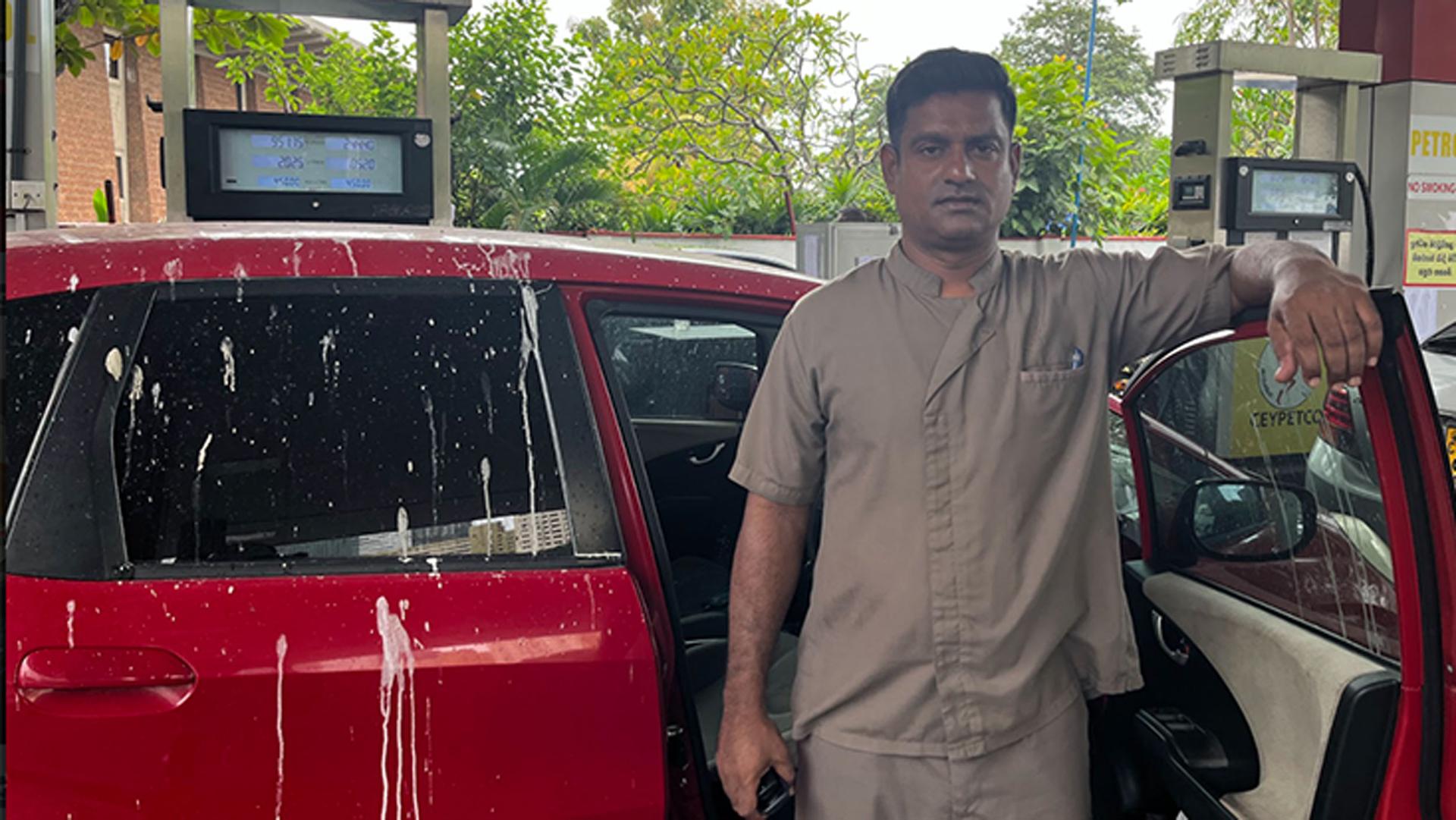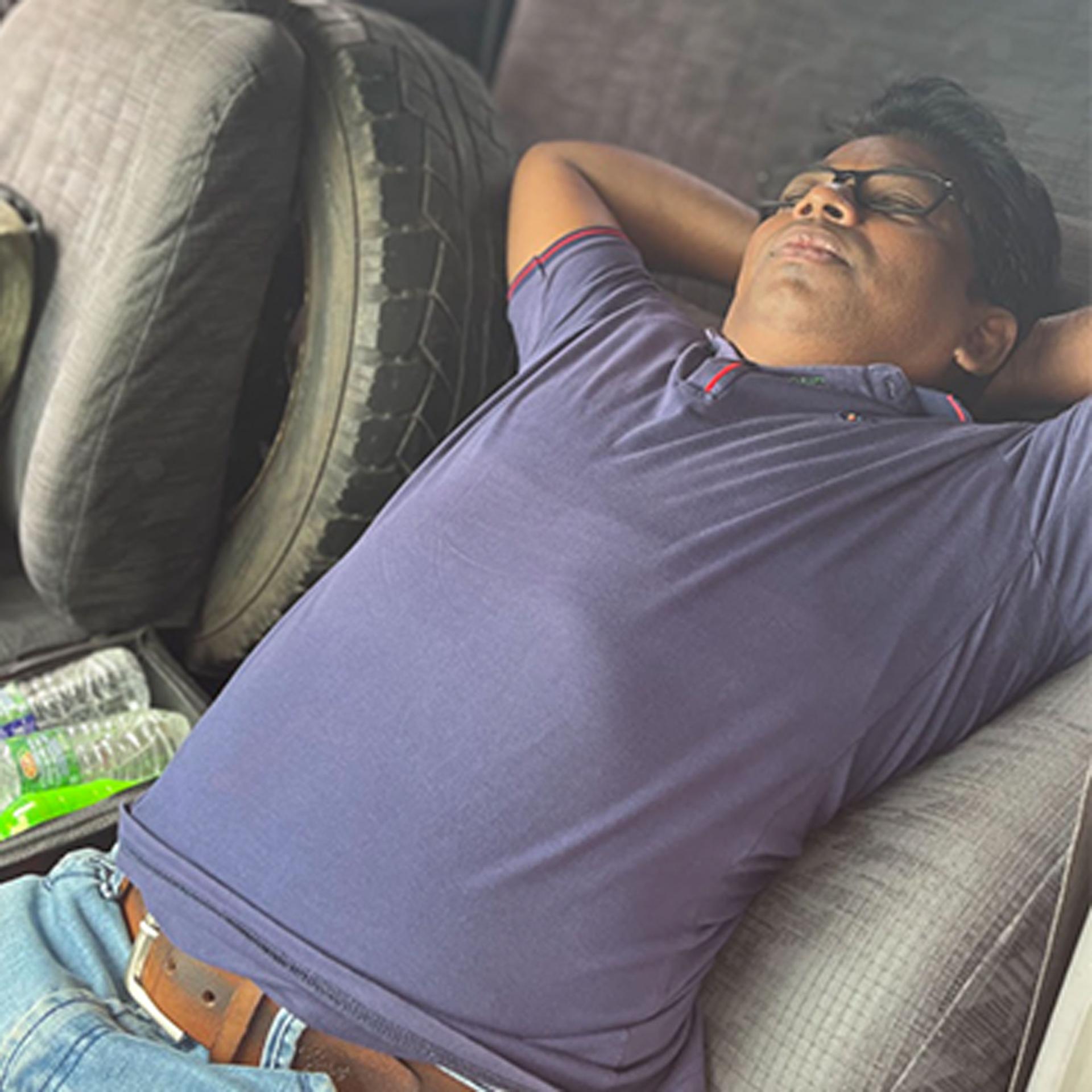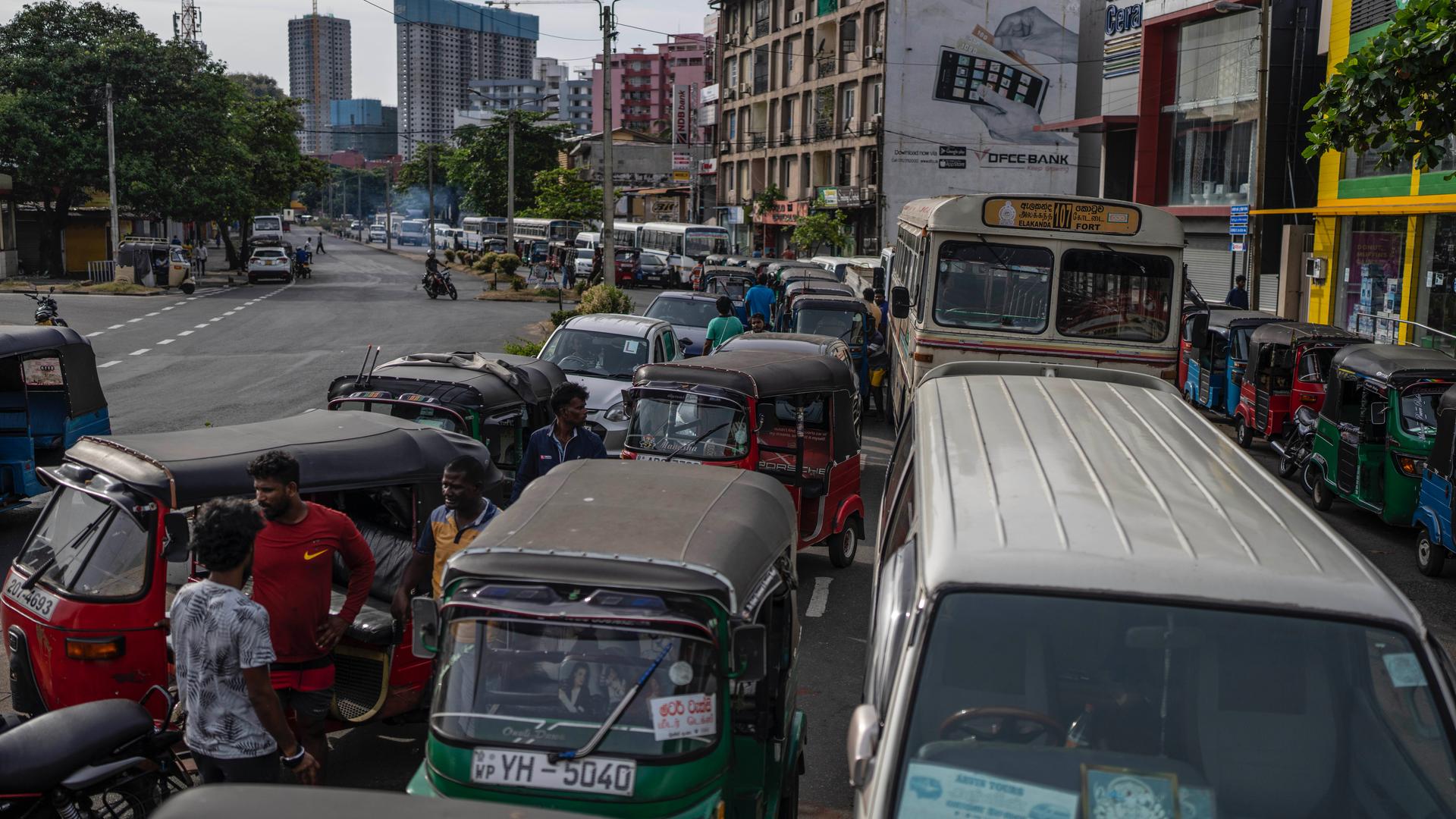One month ago, the government in Sri Lanka said the country was nearly out of gasoline.
Government employees were told to stay — mostly — at home. Classrooms were shuttered. The country’s farmers and fishermen have also been feeling the pain, because they don’t have enough fuel to power their tractors and boats.
Then, about a week ago, gas stations across Sri Lanka received their first new shipments of fuel. Motorbikes, rickshaws and cars have now trickled back to the streets of Colombo, the country’s financial capital and largest city. But gasoline and diesel are being tightly rationed, and traffic is still much lighter than usual.
Many people still can’t get to work. And cars are just sitting unused in garages. Meanwhile, long lines outside of gas stations have become ubiquitous.
Hotel driver Kalum Jayantha said that for the past two months, his job has mostly entailed waiting in fuel lines.
Last Thursday, he waited for several hours at a station in Colombo that had just gotten its first shipment of fuel in a month, only to have supplies run out right as he pulled up to the pump.
“An incredible wave of sadness swept over me,” he said while standing in his chauffeur’s uniform outside his car, which was still parked at the pump 24 hours after he first arrived at the station.
But he decided to keep waiting overnight, because without fuel, he said can’t work to support his family.
“If I lose my job because of this fuel crisis, my only option would be to leave the country.”
“I have two young daughters,” he said. “If I lose my job because of this fuel crisis, my only option would be to leave the country.”

Sri Lanka imports its fuel, and it no longer has enough foreign currency to buy adequate supplies from abroad.
The government blames the country’s economic crisis on the COVID-19 pandemic, which severely reduced the number of tourists who would bring foreign currency into the country.
But many economists also point to poor financial management under the tenure of former President Gotabaya Rajapaksa, including ill-timed tax cuts in 2019 and a food crisis brought on by an abrupt ban on importing chemical fertilizers in 2021.
In May, Sri Lanka defaulted on its debt for the first time in the country’s history, scaring off international lenders.
Shortages have eased somewhat from a month ago though, when the government announced it would temporarily halt sales to private vehicles as the country came close to running completely out of fuel.
But lines remain long — and supplies limited.
Last week, Nishantha De Kostha waited in line for six days to get diesel for his truck, which he drives for a government agency. He’s been sleeping in fits and starts in the reclined passenger seat of his vehicle, and walking to his nearby office for a meal and to wash up once a day.
“It’s important to prepare yourself psychologically.”
“It’s important to prepare yourself psychologically,” he said, adding that it’s best not to think too much about all the time spent in line.

A whole subculture has now popped up around the fuel crisis. Drivers in line conduct Zoom meetings on laptops in their cars. They even drop their keys off with the person behind them in line if they have to step away, in case the line inches forward while they’re gone.
Smartphone apps have also begun publicizing where the next fuel tanker trucks are reportedly scheduled to arrive. And a black market for fuel has also cropped up, selling a liter at a time.
To make matters worse, Sri Lankan media have reported that some people have even died waiting in line, and that at least one man has been killed in an altercation over gas.
Gayathri Sivayoganathan, a mother of two, recently took a day off work while her mother watched her children — in hopes of getting gas in Colombo.
“I want to be positive. Somehow, I will get it today,” she said, several hours into sitting in her car, whiling away time on social media and chatting with her husband on the phone. “I don’t think I can get another day off.”
Sivayoganathan said that she spent 16 years living in the north of the country while Sri Lanka’s civil war was raging, and that these long fuel lines remind her of that time.
“We, again, are waiting in the queue to get the essentials,” she said. “The war is fighting for the basics now.”
The line she was waiting in stretched for a mile behind the gas station. Hasitha Ganesh Fernando was the last car there as of midmorning on Friday.
Fernando was decidedly less optimistic about getting fuel than Sivaygoganathan, and had a change of clothes hanging in the back seat in case he had to wait overnight.
“There’s no point in going home without petrol,” he said.
Neither Sivaygoganathan nor Fernando were able to get gas that day. The supply of fuel that had arrived midmorning ran out by the early evening.
The current supplies of gas and diesel are still being tightly rationed. They’re expected to last weeks, but sustained relief isn’t expected until the Sri Lankan government can finalize an economic bailout package with the International Monetary Fund.
But that’s estimated to be months away. The former head of the Central Bank of Sri Lanka told local media on Monday that the deal could come through by December, which means that line-weary Sri Lankans won’t be getting the relief they’re looking for anytime soon.
Related: ‘We are ready to face any violence’: Protesters in Sri Lanka brace for a crackdown
